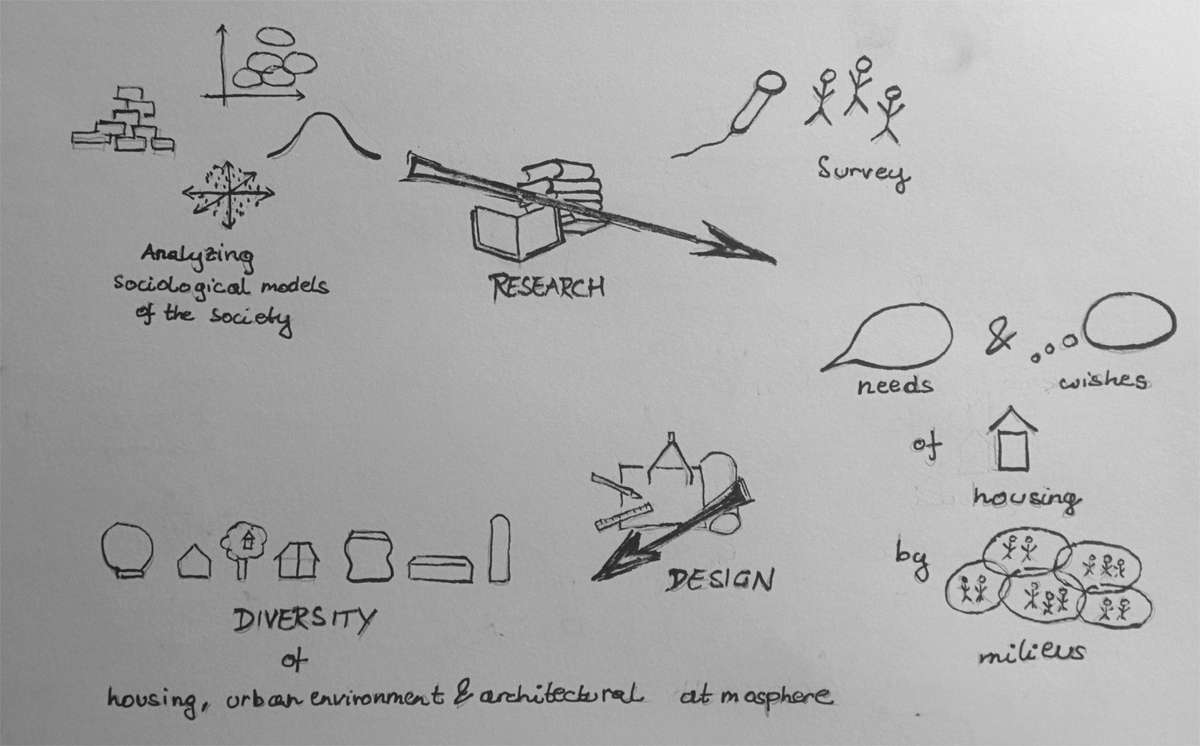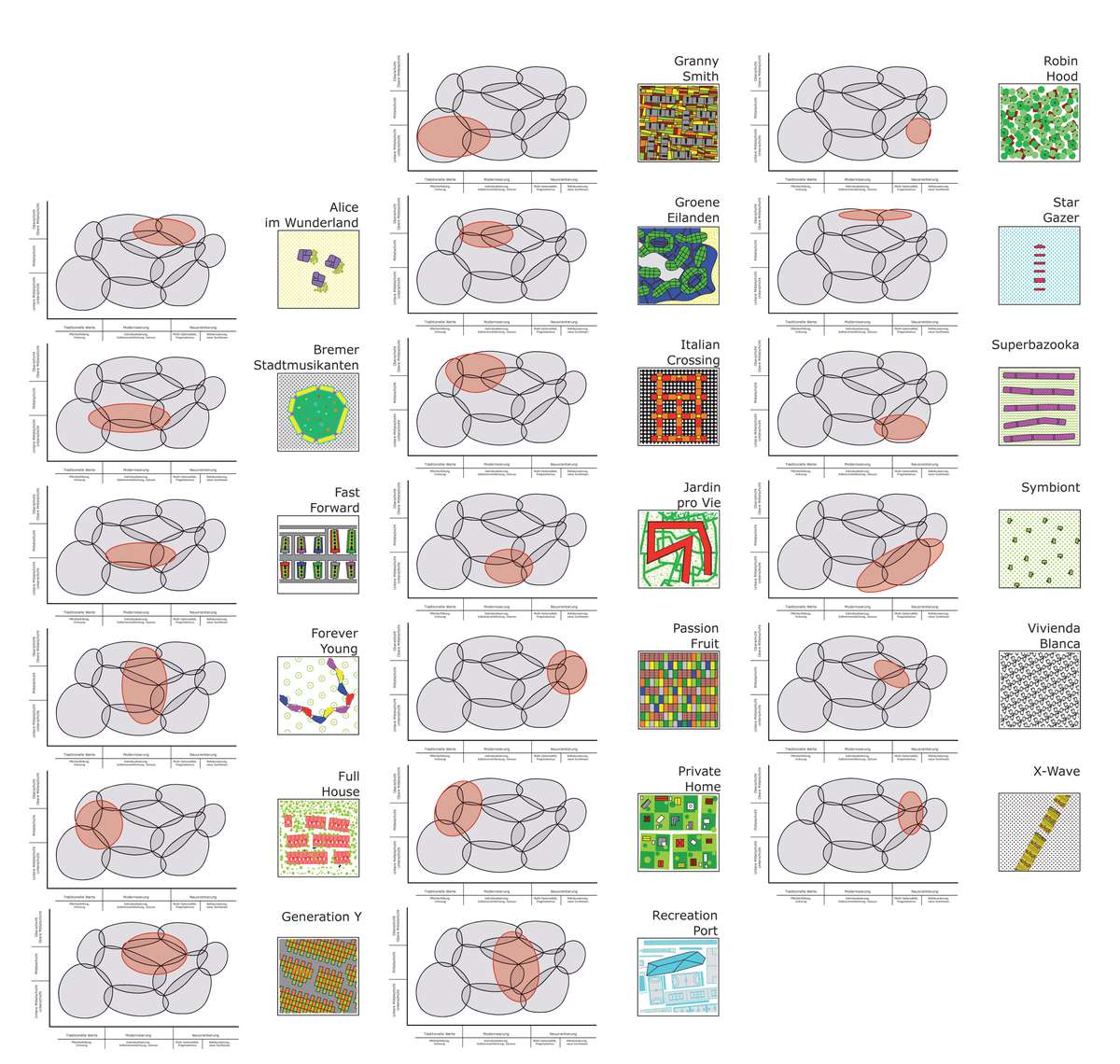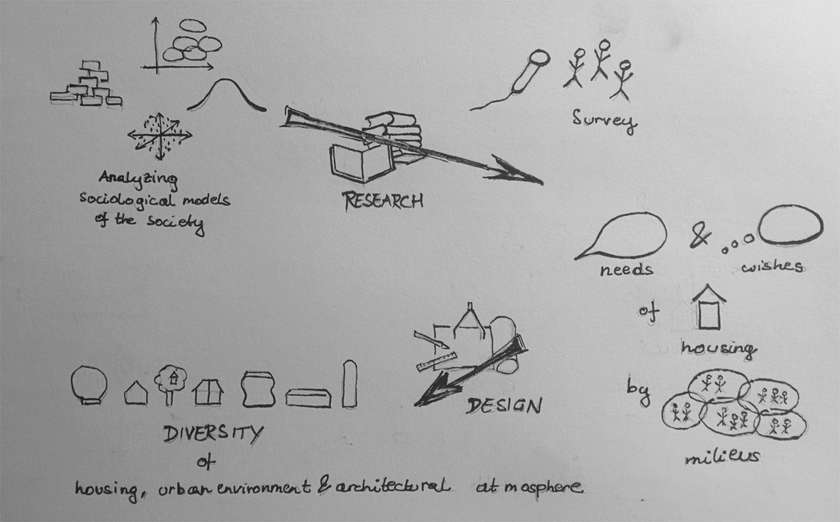Idea by
Katharina Koeglberger
Call for ideas 2016
Housing ability
Housing ability

The goal is to develop guidelines, planning methods, and tools for architects and urban planners that concentrate on the needs of the society and the individual on different scales and levels: e.g. typology of apartments and buildings, neighborhood arrangement, and atmosphere.Models of the current society show that there is an ongoing process of diversification and individualization which can not be answered by housing only driven by technical standards and economic reasoning, as in many recent built projects. It might be that planners lost track of people's needs in the challenge of meeting regulation and technical issues. The investigation of needs and desires of different milieus and lifestyles concerning their living spaces should increase the quality of life, diversity of housing, urban environments, and architectural atmospheres.The goal is to refocus on the individual needs by linking architectural designing and analyzing processes with statistical data and sociological methods.

Scheme of the working method: The first part is to do research by using sociological methods, such as the analysis of existing literature and surveys of people about their needs and dreams concerning housing. The second part is to summarize the findings and put them down to architecture by designing processes. The goal is to develope guidelines, planning methods and tools for architects and urban planers that lead to diversity.

An example of tying architecture and design practice with sociological models:
The parts of a city construction kit linked to the austrian society. It tries to have various building and appartment types, sourroundings and athmospheres to meet the needs of different milieus.

A design of architecture full of diversity
Housing ability
Housing ability

The goal is to develop guidelines, planning methods, and tools for architects and urban planners that concentrate on the needs of the society and the individual on different scales and levels: e.g. typology of apartments and buildings, neighborhood arrangement, and atmosphere.Models of the current society show that there is an ongoing process of diversification and individualization which can not be answered by housing only driven by technical standards and economic reasoning, as in many recent built projects. It might be that planners lost track of people's needs in the challenge of meeting regulation and technical issues. The investigation of needs and desires of different milieus and lifestyles concerning their living spaces should increase the quality of life, diversity of housing, urban environments, and architectural atmospheres.The goal is to refocus on the individual needs by linking architectural designing and analyzing processes with statistical data and sociological methods.

Scheme of the working method: The first part is to do research by using sociological methods, such as the analysis of existing literature and surveys of people about their needs and dreams concerning housing. The second part is to summarize the findings and put them down to architecture by designing processes. The goal is to develope guidelines, planning methods and tools for architects and urban planers that lead to diversity.

An example of tying architecture and design practice with sociological models:
The parts of a city construction kit linked to the austrian society. It tries to have various building and appartment types, sourroundings and athmospheres to meet the needs of different milieus.

A design of architecture full of diversity